Off Season Priority List for the PWHL
A few things the PWHL could improve for next season to continue, if not grow, their momentum.
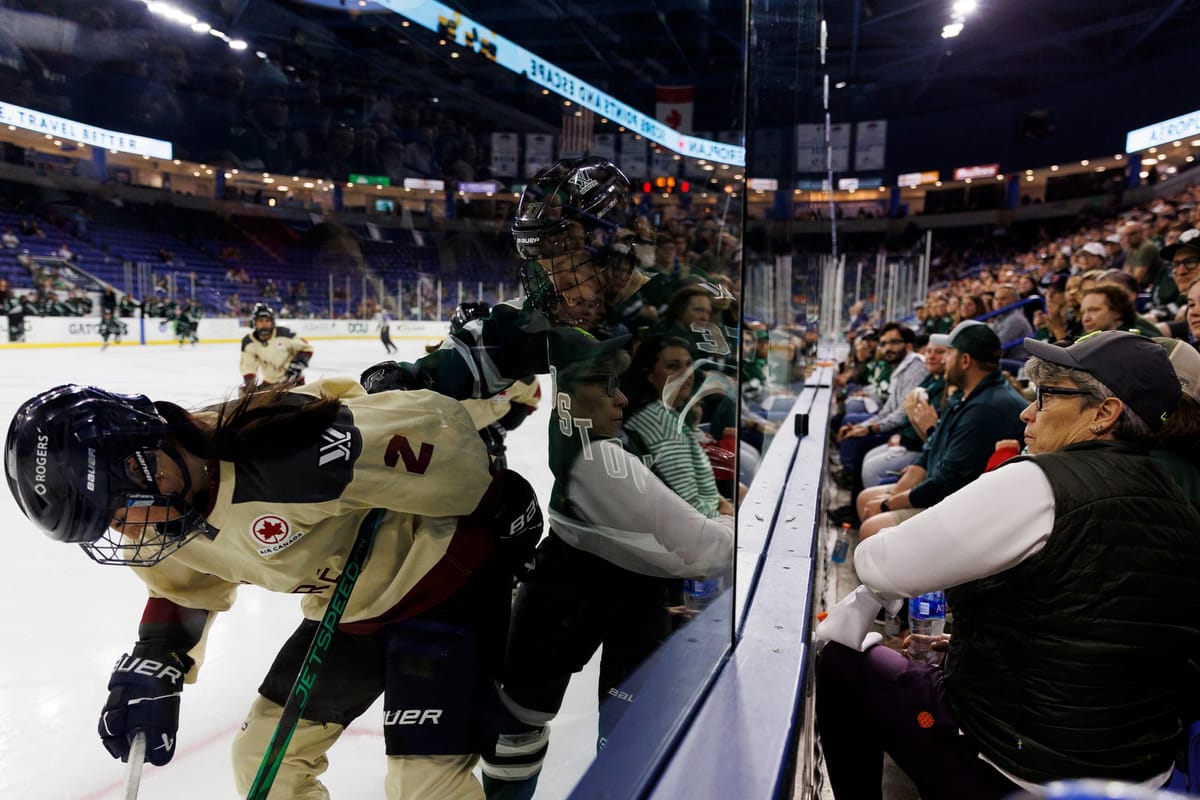
Season one for the PWHL is in the books! After an extremely truncated inaugural off season, by and large, the season was a success. From the broadcasts to the YouTube to the arenas, fan support for the league was off the charts.
This off season is going to be extremely important to keep the momentum going -and growing. A big sticking point from the first season - the lack of team names and logos - has already been addressed, with those details coming in August, per Amy Scheer on a playoff broadcast. There's a few other areas I think the league could improve to make the second season, just as, if not more successful.
The "New York" Team
The team known as New York seemed to struggled off the ice just as much they did on the ice. The latter should be helped by getting the first pick in the upcoming draft as well as a new head coach after Howie Draper and the team mutually parted ways in early May
But what would also probably help is consistency in their home arena. In their 12 home games, they played in three different arenas in three different states - Total Mortgage Arena in Bridgeport, CT. (four games), UBS Arena in Elmont, NY. (six games), and the Prudential Center in Newark, NJ (two games) - while practicing in a fourth location - Chelsea Piers in Stamford, CT.
The closest rink to the practice rink is 30 minutes with little traffic and the farthest is just over an hour with no traffic. Looking at all of those locations on a map, it's not hard to imagine that none of these games feel like a home game for the players on the home team. And it seemingly showed on the ice. They only won four home games - the lowest of any team in the league.
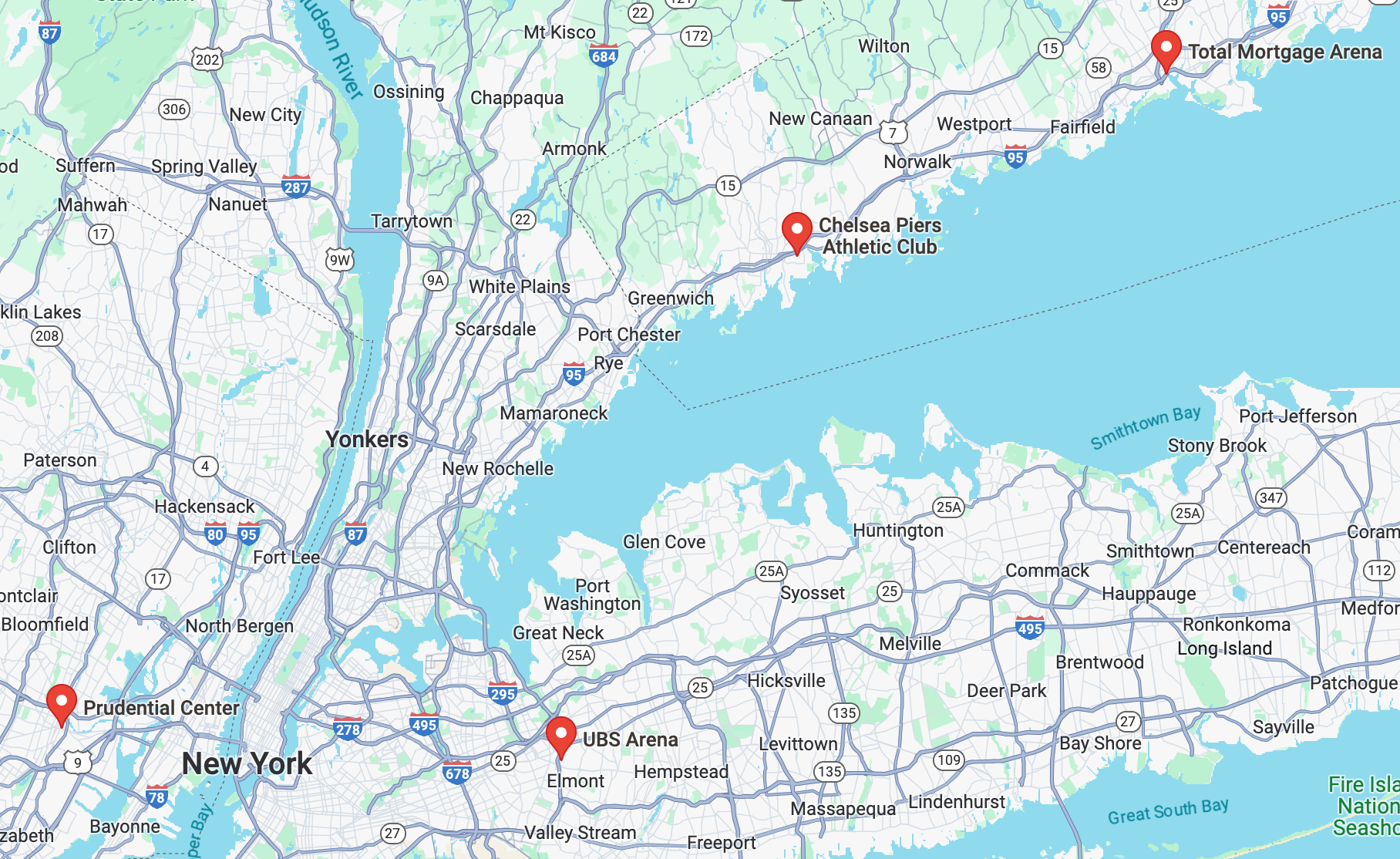
Off the ice, it's hard to build a consistent attendance base when the team is constantly moving around.
They played in two NHL arenas and an AHL arena whose total capacities put them in second in the league for largest possible attendance (only Minnesota and the Xcel was higher). But the team called New York had the lowest total home attendance of all teams at 29,952 and only filled an average of about 18 percent of their seats each home games, also a league low by a long mile. Eight of their 12 home games were in the bottom 10 attendance overall (the other two in the bottom 10 were Boston's Wednesday games in February).
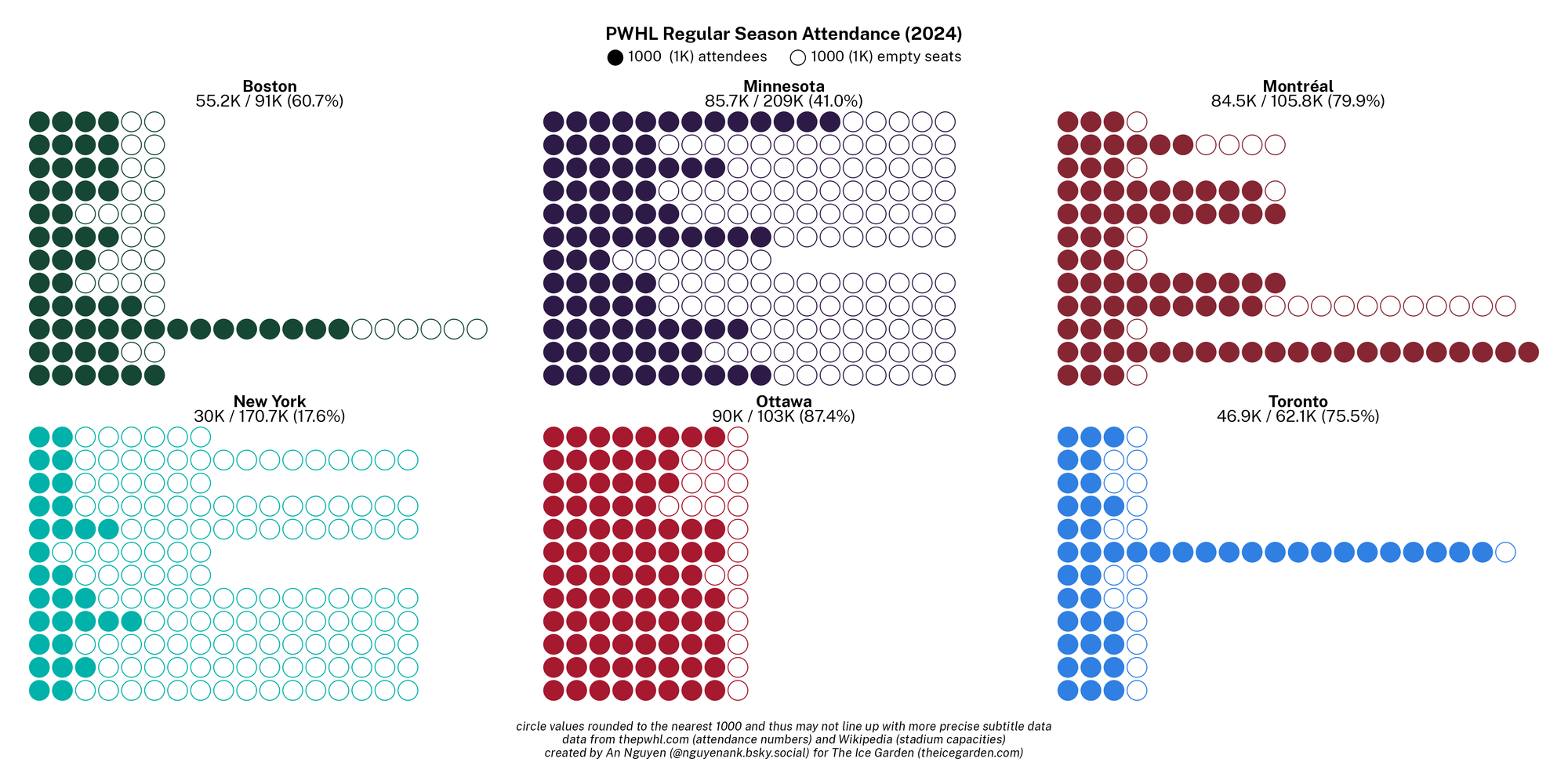
It does beg the question, what comes first the chicken or the egg - or to put it in hockey terms: if they were winning would they have drawn crowds better? Regardless of that answer, it's clear the league needs to rethink how they approach the metropolitan (or even New York State) area team to build their fan and attendance base next season.
Hitting
From literally the first game, the league allowed - and even encouraged - a much more physical game than we've ever seen in a North American league. Body checking was legal in certain situations, per the rule book. But, for almost every single PWHL player, this is the first time they've ever been allowed to hit in any situation.
The problem is that there was little, if any, training how to give and take hit legally within the rule book's definition of playing the puck or gaining possession. Publicly, only Ottawa put on a hitting clinic, observed by Chris Sinclair of The Hockey News W. The clinic took place during the break for the World Championships when Ottawa was missing players who were with their National Team.
The issue with hitting was apparent at all stages of the season - from one of the first games on Jan. 5 through the final game of the regular season. Of the 10 disciplinary actions made by the league, six were due to illegal hits. At least two hits sent players to the injured list.
On March 16, Aneta Tejralová hit Loren Gabel. Gabel missed a few games before being put on the long term injured reserve on April 20. She was activated on May 14 for Game 3 of the semifinal but saw extremely limited minutes in that game and the Finals. On March 23, Blayre Turnbull hit Becca Gilmore, and Gilmore left the game. On April 1, Gilmore would go on the LTIR for 20 days.
this attempt at a hip check could've ended SO badly. players can throw hits now. which is unreal. but please teach them how topic.twitter.com/oySFmuanW9
— alyssa (@alyssalerae) January 6, 2024
As more players come out of college hockey and into the league, this problem is only going to be exacerbated - unless the league steps up and requires teams to put on hitting clinics.
They aren't the first women's hockey pro league to allow body checking. The SDHL has since their pilot program in the 2022-23 season and then expanded the program to allow open ice hitting.
Expansion
When the PWHL was announced, the number of professional women's hockey teams shrank from 11 (seven in the PHF and four in the PWHPA) to six. At the time the PWHPA was negotiating their CBA, they had no idea the PHF would be bought by the Mark Walters Group to create the PWHL. So the number of teams in the CBA made sense. But now, as we hit the end of the first season, it seems clear that expansion needs to happen sooner rather than later.
In the upcoming draft, 42 players will be selected. Last season, there were just over 100 players on one-year contracts. I'm sure we'll see players sign overseas or retire, but I fully believe that the women's hockey player pool can support one to two more teams (aka 25-50 roster spots) in the PWHL and still keep the level of competition high.
Player pool aside, the interest seems to be there in other cities. Last season, two games were played in neutral site locations - Pittsburgh and Detroit. Women's hockey has a long history in Pittsburgh, and in recent history, has shown up well when the various league's play All Star Games (NWHL 2018) or showcase weekends. The game between Montréal and Toronto this season drew 8,850 fans, the 10th highest attendance in the regular season.
Detroit - and Michigan in general - is a fairly untested market, at least in terms of women's hockey. The state has does not have a single Division I NCAA team despite having the fifth highest number of female players registered with USA Hockey in 2023-23 season, the most recent data provided. However, when Boston and Ottawa played at Little Caesars Arena in March, 13,736 fans showed up, the third highest attendance in the regular season.
Either of those cities seem like strong options. I'd also flag Chicago, Washington DC, and Calgary (the Inferno were an extremely popular team) as possibilities for expansion (or to move the New York area team).
Gender Inclusion Policy
The gender inclusion policy is an extremely important topic and one I'm frankly not well versed in enough to speak on. So I pulled Meredith Foster off the bench for more insight...
Simply put, the PWHL needs a gender inclusion policy because it's the right thing to do. Athletes who identify as trans, nonbinary, gender nonconforming, or any of the other myriad umbrella terms under the gender spectrum deserve a safe and dignified workplace just as much as their cisgender counterparts, period. They deserve to know exactly where the league stands on various forms of gender-affirming healthcare, like hormone therapy.
In September 2023 the league promised a gender inclusion policy would be in place before the inaugural puck drop. It is now June 3 and the season is over. There is no policy, no details of how it's being formulated, nothing about who the league is working with to ensure trans voices are at the forefront of the issue where they belong, zero, zilch.
The 2024 draft class includes at least one openly transphobic player in Britta Curl, as shown below.
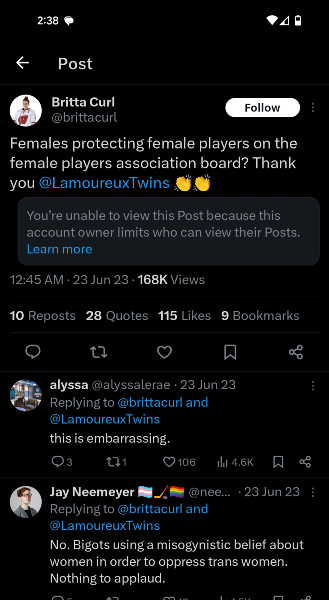
A trans player seeing these tweets needs to know they'll be safe and respected in the PWHL, regardless of what their ignorant counterparts have to say about it. The league loves to promote itself as a progressive entity, and creating a solid gender inclusion policy is a building block of making that a reality. It would show the PWHL is serious about making a league built for all those who earn their ice time, not just for those who are the most marketable.


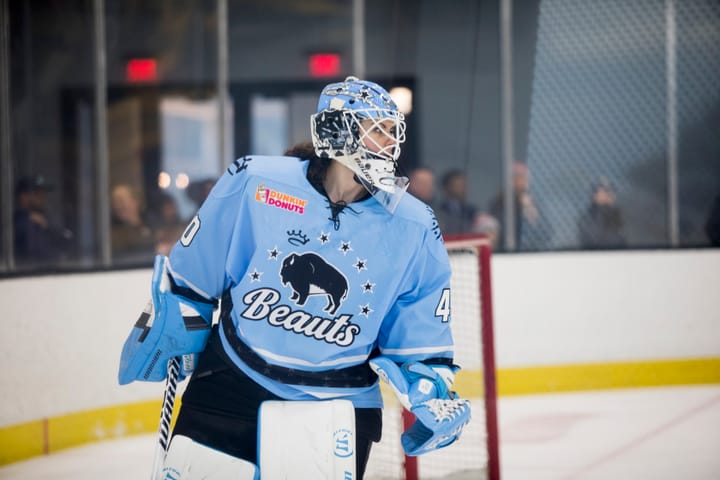
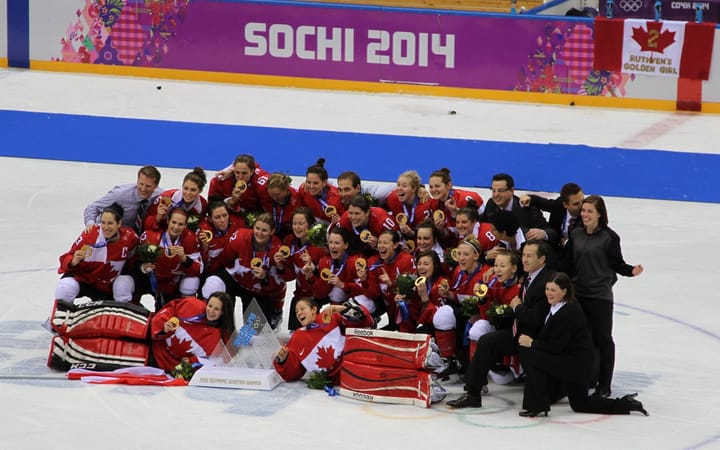

Comments ()